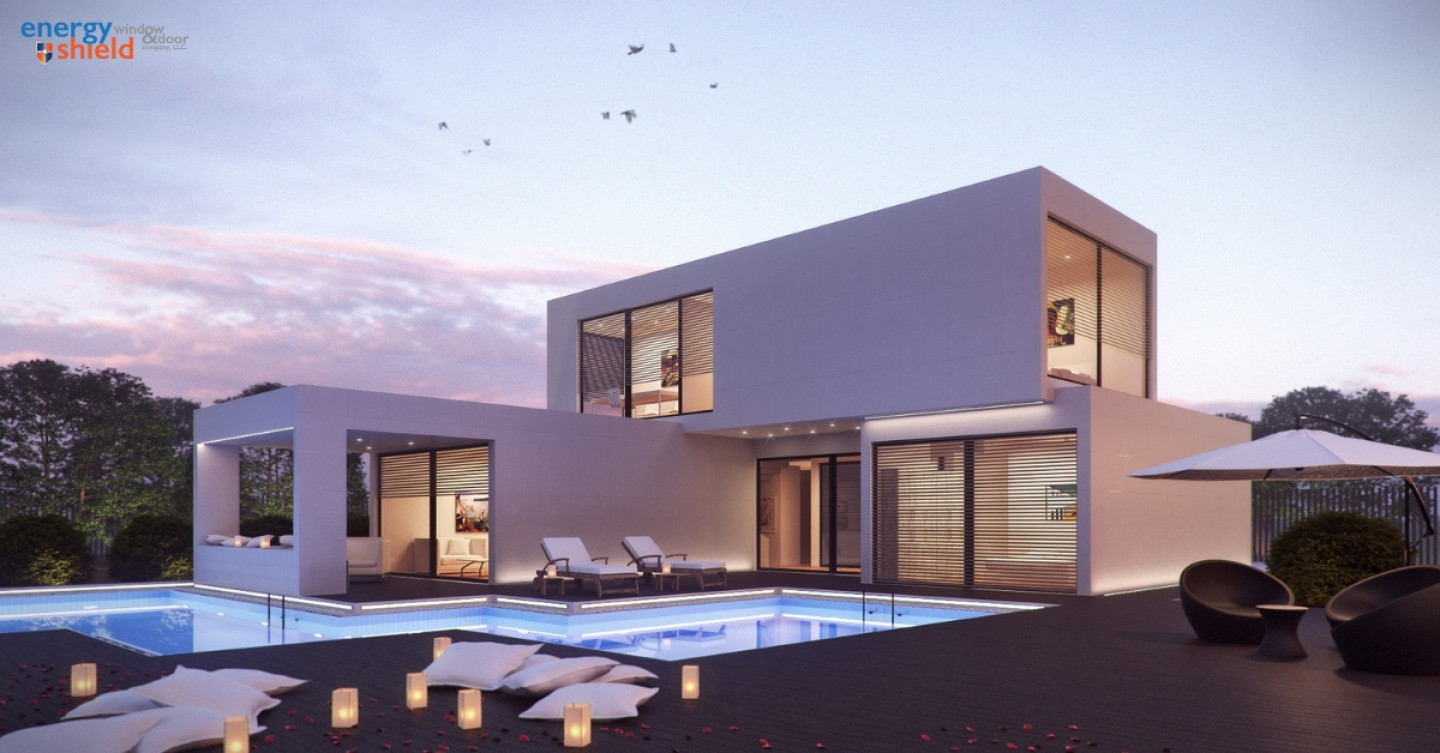Interior and exterior glass doors create a connection between the outdoors and the indoors. Exterior glass doors provide beautiful full views and sunlight throughout the house. Interior glass doors define spaces and provide privacy between rooms while allowing rooms to feel more open and airy. Of course, both interior and exterior glass doors must be strong and durable, but there are big differences in their construction that do not allow the two to be interchangeable for indoor and outdoor use.
Differences Between Exterior and Interior Glass Doors
Interior and exterior glass doors typically involve very different kinds of construction processes and materials. Select only an appropriately manufactured glass door type for the area of your home where you plan to install it.
Exterior Glass Door
Exterior glass doors are built differently than interior glass doors. Homeowners should not install interior glass doors on the exterior of a house. Exterior doors are built with heavier frames and stronger glass. Both the framing and the glass are typically made with more insulative features and weather-resistant materials to maximize energy efficiency. For example, vinyl framed glass doors with dual panes of low-E glass filled with argon gas.
Interior Glass Door
Glass interior doors are designed to define interior spaces uniquely, separating areas while preserving a connection between them. So, interior glass doors naturally do not provide the same degree of sound insulation or visual privacy that solid doors create. But, there are very special benefits in the openness, connectedness, and natural light that no other door type can provide as well as glass doors can.
Glass Door Styles
The beauty, functionality, and versatility of glass doors make them exceptionally popular for exterior and interior use in any area of the home. While the manufacturing grade of interior and interior glass doors is very different, the most popular styles of glass doors are used for either exterior or interior installation.
Sliding Glass Doors: Sliders are very versatile. An interior sliding door creates cohesion between rooms without taking space from them (unlike hinged doors). A high-quality exterior sliding glass door brings the outdoors in while preserving maximum energy efficiency.
Glass French Doors: French Doors are a pair of doors designed to be used side by side and open in the middle. Each door contains either a large single glass pane or divided panes.
Glass Front Doors: Glass front entry doors come in a very wide range of very popular styles, from the sleekest and most modern to the grandest and most opulent designs.
Glass Garage Doors: Better home designs with glass doors even bring light into outdoor spaces like workshops. Boldly incorporating these doors directly into home interiors creates a connection with the outdoors or even between interior rooms.
Glass Barn Doors: Sleek glass barn doors elevate the sophistication of the classic barn door style that is now so widespread in home decorating.
Glass Storm Doors: A basic glass storm door provides a home with excellent protection from severe southwest desert weather elements, like hard winds and driving monsoon rains.
Glass Door Enhancements
Different types of glass provide different aesthetic and functional benefits. For privacy, glass in doors may be etched or frosted or have decorative grilles overlaying the glass to allow light in but obscure the visibility through the glass.
Choosing Your New Glass Doors
Glass doors offer a beautiful alternative to regular all-wood doors for exterior or interior use. You have both separate living spaces and abundant natural light flowing into your home. The aesthetic benefits of glass doors for exterior or interior applications are in a class of their own. Today’s state-of-the-art energy-efficient glass doors also provide exceptional comfort, weather resistance, and long-term durability.
For the Best Glass Doors – Energy Shield
Energy Shield glass doors are specially built for high performance in the desert conditions of the U.S. southwest desert region. They’re engineered for energy efficiency, noise insulation, and improved dust control.
























